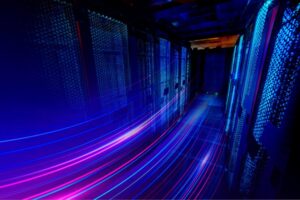In today’s increasingly digital business world, cybersecurity risks are emerging at a rapid pace. Ransomware assaults are among the most destructive of these dangers, crippling organizations by encrypting data and demanding large ransoms to release it. As firms adopt remote work methods and cloud-based technology, network security becomes increasingly important. One of the most effective solutions to this problem is remote monitoring.
In this post, we’ll look at how remote monitoring can help your business avoid ransomware attacks, reduce downtime, and ensure data integrity.
What Is Remote Monitoring?
Remote monitoring is the continuous inspection of an organization’s IT infrastructure from a remote location. IT professionals can utilize specialized software to monitor network performance, identify vulnerabilities, and respond to cyber threats in real time, all without the need for physical presence.
This technology enables enterprises to monitor their whole network, including servers, workstations, and cloud applications. It is a critical component of current cybersecurity strategy, especially for businesses with a scattered workforce or various office locations.
Netmonk is a strong solution for organizations that provides extensive remote monitoring features to help protect your network from threats such as ransomware.
Understanding Ransomware Attacks
Ransomware is a type of malicious software designed to block access to a system or data until a ransom is paid. Cybercriminals typically use phishing emails, malicious downloads, or software vulnerabilities to infiltrate a network. Once inside, they encrypt the organization’s files, rendering critical systems useless until payment is made.
Common types of ransomware include:
- Crypto-ransomware: Encrypts files, making them inaccessible without a decryption key.
- Locker ransomware: Locks users out of the entire system.
- Scareware: Tries to scare users into paying by displaying fake security alerts.
The financial and reputational damage caused by ransomware can be catastrophic, making prevention a top priority for any organization.
How Remote Monitoring Helps Prevent Ransomware Attacks
Implementing a remote monitoring system offers a proactive approach to cybersecurity. Here are several ways it can help protect your business:
1. Real-Time Threat Detection
One of the main advantages of remote monitoring is the ability to detect potential dangers in real time. Advanced monitoring systems constantly look for suspicious activity, such as illegal login attempts, strange file changes, or unexpected data transfers. Early detection enables IT professionals to intervene before ransomware has completely compromised the network.
Example:
If the system notices multiple failed login attempts from an unfamiliar IP address, it can automatically block the IP or alert administrators for immediate action.
2. Automated Security Updates and Patching
Outdated software is one of the most prevalent weaknesses targeted by ransomware perpetrators. Remote monitoring technologies may automatically distribute security patches and updates to all devices, ensuring that your systems are constantly secured with the most recent protections.
Key Benefits:
- Eliminates the need for manual updates
- Reduces downtime due to system vulnerabilities
- Prevents attackers from exploiting known weaknesses
3. Monitoring for Unusual Network Behavior
A sudden increase in network traffic or data transfers may indicate the early stages of a ransomware attack. Remote monitoring systems can spot irregularities in network behavior, allowing IT professionals to analyze and mitigate issues before they escalate.
How It Works:
- Tracks bandwidth usage and traffic patterns
- Detects unauthorized data access or exfiltration attempts
- Sends alerts for abnormal activity
4. Data Backup Monitoring
Regular data backups are required to protect against ransomware, but they are only effective if they are well maintained. Remote monitoring solutions ensure that backups are completed on time and with integrity. If an assault occurs, organizations can swiftly restore their systems from a fresh backup without having to pay a ransom.
Best Practices:
- Use both on-site and off-site backups
- Test backup recovery procedures regularly
- Ensure backups are protected from unauthorized access
5. Endpoint Protection
Every network-connected device, whether a laptop, smartphone, or IoT device, has the potential to be a source of ransomware infection. Remote monitoring allows you to follow endpoint activity and implement security policies including antivirus updates, firewall setups, and access control measures.
Key Features:
- Device status tracking
- Automated security enforcement
- Remote device lockdown in case of a breach
Benefits of Remote Monitoring for Businesses
Adopting a remote monitoring solution offers several advantages for businesses looking to strengthen their cybersecurity posture:
1. Proactive Threat Prevention
Instead of reacting to ransomware attacks after the damage is done, remote monitoring helps businesses prevent breaches before they occur. Early detection and automated responses reduce the chances of falling victim to ransomware.
2. Cost Savings
The cost of a ransomware attack can be enormous—not just in terms of the ransom itself but also lost productivity, downtime, and potential legal liabilities. By investing in remote monitoring, businesses can avoid these expenses and ensure operational continuity.
3. 24/7 Network Surveillance
Cyber attacks do not respect business hours. Remote monitoring solutions offer around-the-clock surveillance, ensuring that dangers are noticed and dealt at all times, day or night.
4. Enhanced Compliance
Many industries need organizations to follow severe cybersecurity requirements (e.g., GDPR, HIPAA, PCI DSS). Remote monitoring ensures compliance by keeping security protocols up to date and providing audit logs for regulatory inspection.
How to Implement Remote Monitoring for Ransomware Protection
If you’re ready to implement a remote monitoring solution, follow these steps to ensure a successful deployment:
1. Assess Your Current IT Infrastructure
Evaluate your current network setup to identify vulnerabilities and areas that need improvement. Consider factors such as the number of endpoints, cloud services, and remote work policies.
2. Choose the Right Remote Monitoring Solution
Select a remote monitoring tool that fits your business needs. Look for features such as:
- Real-time alerts
- Automated patch management
- Endpoint detection and response (EDR)
- Integration with existing cybersecurity tools
A great starting point is Netmonk, which offers a comprehensive suite of features designed to monitor and protect your network effectively.
3. Train Your IT Staff and Employees
Even the best monitoring systems won’t be effective if your staff isn’t trained to use them properly. Provide training for your IT team and educate employees on cybersecurity best practices to minimize human error.
4. Establish Response Protocols
Develop a clear incident response plan for ransomware attacks. This should include:
- Steps to isolate infected systems
- Procedures for restoring backups
- Communication strategies for informing stakeholders
5. Regularly Test and Update Security Measures
Cybersecurity threats evolve quickly, so you must test your defenses and update your response processes on a regular basis. To ensure your network’s security, do routine vulnerability assessments and penetration tests.
Conclusion
Ransomware attacks are becoming more sophisticated, but organizations do not have to be vulnerable to these costly risks. Implementing a robust remote monitoring system allows you to discover ransomware attempts early, respond quickly, and mitigate possible damage.
Remote monitoring provides a full protection approach for enterprises of all sizes, including real-time threat detection, automated patching, and backup monitoring. Investing in this technology safeguards your data while also ensuring business continuity and strengthening your organization’s overall cybersecurity posture.
Netmonk is a comprehensive monitoring solution that can successfully protect your network against ransomware threats.






